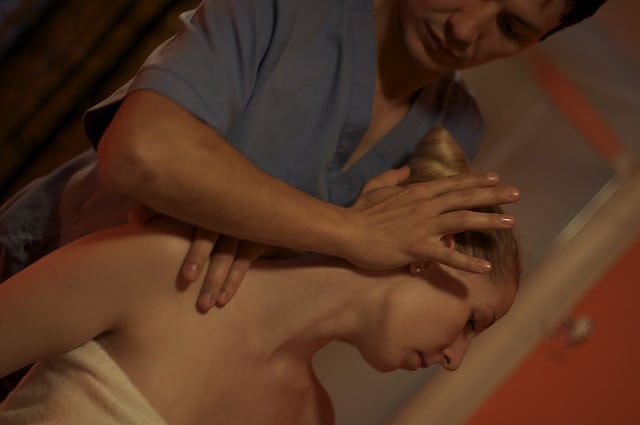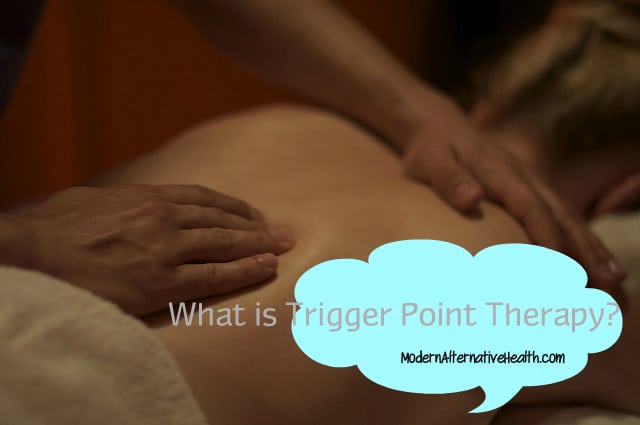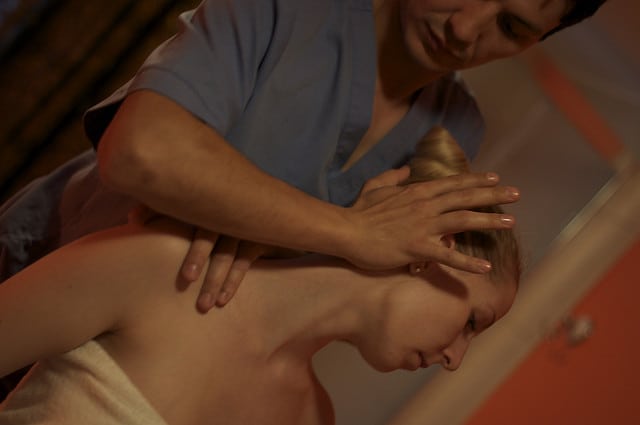Image by Nick Webb
By Michelle, Contributing Writer
Have you ever had a “knot” in your shoulder that just won’t go away? It hurts so much and it hurts more when you press on it…. And you even feel pain in other places, like maybe your forehead or your eyes, when you press on it? You were probably experiencing active trigger point pain. The truth is: we all have trigger points.
What is a Trigger Point?
Let’s start with two basic definitions of trigger points.
From Travell & Simons (the “mother and father” of trigger point research):
A highly irritable localized spot of exquisite tenderness in a nodule in a palpable taut band of muscle.
From Beck:
Trigger points are hyper-irritable nodules associated with dysfunctional contractile tissue that illicit a pain response when digital pressure is applied.
(Massage Therapist Michelle’s layman’s terms: A knot. That hurts. And likely “triggers” more pain when you press on it. Sidenote: a trigger point is NOT a pressure point; those are two distinctly different things.)
The science behind trigger point causes is still in the works; there are certainly theories. For now, it is at least known that trigger points “generate and receive” minute electrical currents (discovered by Dr. Janet Travell in 1957). If you have ever taken an anatomy course, then you probably know that muscles work by receiving electrical impulses.
When a muscle is relaxed, a part of it should not still be generating and receiving electrical currents! Sounds like a really good way to wear a muscle (read: your body!) down to exhaustion. Posture, stress, and injury can all certainly be contributing factors to the cause, but the scientific explanation is a little more mysterious.
How to Treat Trigger Point Pain
Once these muscle fibers find themselves stuck in this “on” position, it can sometimes be a nightmare to tell them to turn “off.” There are definitely treatments and self-care ideas; don’t suffer or let it get worse. A massage therapist, dry needling practitioner (a Western form of acupuncture), or physical therapist may specialize in trigger point therapy. Medical doctors may offer steroid trigger point injections (evidently, this has not been proven to be any more effective than dry needling).
Massage therapists may be trained in trigger point therapy as part of their school coursework or in continuing education. A therapist’s knowledge and ability to treat you will vary greatly based on the depth of their coursework and their experience with trigger point therapy. It is definitely a learned-by-touch therapy. So, ask!
If you decide to see a massage therapist for trigger point pain, ask them when and where they received their trigger point education and how long they have been practicing on patients. (This is not to say that you should never see a newbie; everyone has to start somewhere! And some people are just naturals at finding and releasing trigger points. It is just a good idea to know who your therapist is and what kind of studying they have done.)
photo by Nick Webb
During a trigger point therapy massage, your massage therapist will probably require you to stay interactive. Your therapist will find trigger points and hold (gentle) pressure on them until they release. You may have to let your therapist know if something is too painful and s/he may want you to tell him/her when you feel the pain pattern release.
Patients often say trigger point therapy is a “good hurt.” Trigger point therapy may also include some active stretching to help your muscles “remember” how to work properly. This probably isn’t the kind of massage you want to get for your spa day with the girls. Or maybe it is! It is just not going to be like the movies…with a tiny woman walking on your back…while you have your toenails painted…and have a seaweed facial…and git yer hair did all at the same time. 😉
Trigger point massage can bring great pain relief and help bring your body back from a vicious stress cycle. Stress can activate trigger points and trigger points can absolutely create stress! Ever have your shoulders migrate all the way up to your ears when you are stressed? I see it all the time. According to Travell and Simons, the trapezius (that big shoulder muscle) is the most common place for trigger points to crop up.
Here is the crazy stuff: Not only do trigger points cause pain, depending on location, they can be mistaken for a wide variety of other diagnoses. Let’s stick with the trapezius example: Trigger points in the upper trapezius may cause dizziness or “vertigo.” Or a patient may be diagnosed with chronic sinusitis. Or TMJ dysfunction. Sometimes, trigger point therapy can relieve the symptoms and the real cause of your pain. (Another really cool one? Babies with colic. Sometimes babies need trigger point therapy, too!!)
It’s not magic or voodoo. And I’m not saying that all of your ailments are actually from trigger points. But, I really do believe that so many physical dysfunctions can and will improve with trigger point therapy.









I just finished a 3-month physical therapy for my back (3rd time in therapy and I’m only 24) and was lucky enough to get an adjustment and trigger point every time–2-3 days a week. Also, for keeping appts I got an hour long full body massage once a week. Incredible, and it worked wonders for my overall health.
That place sounds fantastic! I wish I could get a full body massage just for keeping my appointments! 😉
Thank you for the insights into trigger point therapy. It explains a lot. I practice piezoelectric stimulation. I stimulate randomly around inflamed painful areas. I know when I have hit a trigger point because there is a stronger reaction to the mild electrical charge than other points.